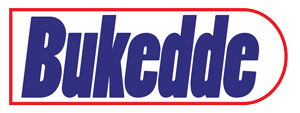Tororo–Gulu Railway Line: A strategic addition to Uganda’s rail network
The Tororo–Gulu line is a strategic infrastructure that supports the Government’s broad development objectives. It will link Uganda with the DRC at Pakwach and with South Sudan at Nimule, facilitating intra-regional trade and enabling Ugandan enterprises to export goods to these markets more cheaply and safely.
Tororo–Gulu Railway Line: A strategic addition to Uganda’s rail network
By Admin .
Journalists @New Vision
_________________
OPINION
By Benon M. Kajuna
The Tororo–Gulu railway line, linking to the Gulu Logistics Hub, is a welcome piece of infrastructure, thanks to the Government of Uganda.
Currently under rehabilitation by the China Road and Bridge Corporation (CRBC) at a cost of sh199b, the line connects eastern and northern Uganda, providing a vital logistics link to South Sudan and eastern DRC. Once fully operational, it will enhance regional trade integration, reduce transport costs, decongest roads, create jobs for women and youth, and promote industrial growth along its path.
The 375 km railway passes through eight districts—including Tororo, Mbale, Soroti, Alebtong, Lira and others—before terminating at the Gulu Logistics Hub, a facility designed to facilitate transportation, consolidation, collection, distribution, and separation of goods for national and international transit.
The Tororo–Gulu line is a strategic infrastructure that supports the Government’s broad development objectives. It will link Uganda with the DRC at Pakwach and with South Sudan at Nimule, facilitating intra-regional trade and enabling Ugandan enterprises to export goods to these markets more cheaply and safely.
Government investment in this railway line and the Gulu Logistics Hub is a key economic enabler that will position Uganda as a strategic logistics hub and increase the country’s export competitiveness.
The infrastructure also has the potential to unlock northern Uganda as an export/import route to South Sudan and eastern DRC, significantly boosting private-sector growth across the country. The region will benefit from an affordable and safe mode of transport for its agricultural products.
The line will provide a direct link between the port of Mombasa and the northern and eastern parts of Uganda. Transporters will be able to move cargo by rail from Mombasa to Gulu without costly road transhipment. As a result, goods will be cheaper due to the reduced cost of transportation.
When fully operational, freight volumes are projected to rise to 120,000 tonnes per year, up from the current 25,000 tonnes, spurring factory growth and increased agricultural production in the northern region.
Over the past two years, significant works have been undertaken, including earthworks, drainage improvements, track laying, ballasting, tamping, and levelling. At the Awoja swamp—where the line had disappeared due to washouts—large culverts have been installed to facilitate smooth water flow, protecting both the environment and the railway.
The rehabilitation is expected to be completed by February 2026 and remains on schedule. Notably, the Tororo–Kumi section has already been fully rehabilitated and is ready for both freight and passenger operations.
Over the past 40 years, Uganda has made major gains under the Integrated Transport Infrastructure and Services (ITIS) program, particularly in road development.
Building on that progress, the Government made a strategic decision to upgrade railway infrastructure through rehabilitation of meter-gauge lines and construction of the Standard Gauge Railway. These efforts are now bearing fruit.
In 2022, CRBC rehabilitated 265 km of railway from Mukono to Malaba and handed it over to Uganda Railways Corporation in 2023. Prior to this work, the corridor was not serviceable. In 2024, Imathia Construction completed works on the Kampala–Mukono section (26.5 km).
With 274 kilometres of serviceable railway lines in 2018, following a failed concession, today’s progress demonstrates that railway infrastructure development is once again a national priority.
The writer is the Managing Director of the Uganda Railways Corporation (URC)
